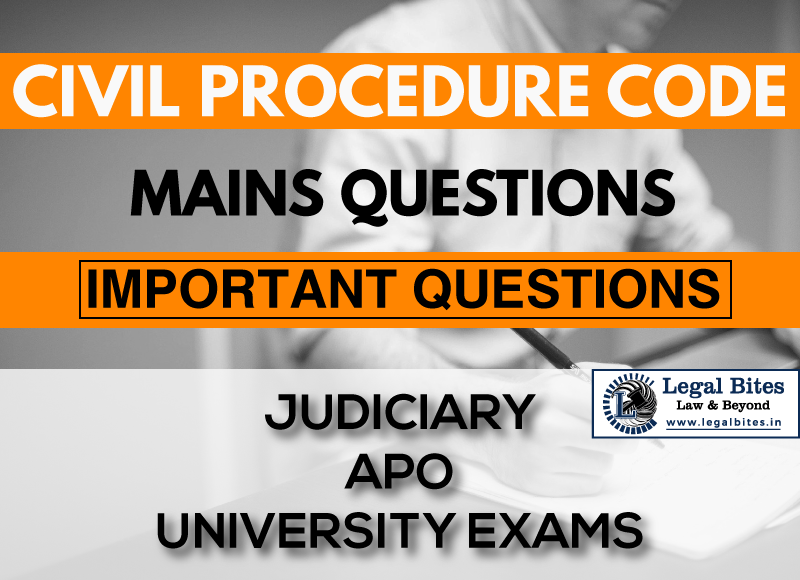What is the bar created by Section 100A CPC?
Question: What is the bar created by Section 100A CPC? [Jharkhand J.S. 2001] Find the answer to the mains question only on Legal Bites. [What is the bar created by Section 100A CPC?] Answer Section 100-A as inserted by the Amendment Act of 1976 enacts that no further appeal shall lie against the decision of a Single Judge… Read More »

Question: What is the bar created by Section 100A CPC? [Jharkhand J.S. 2001] Find the answer to the mains question only on Legal Bites. [What is the bar created by Section 100A CPC?] Answer Section 100-A as inserted by the Amendment Act of 1976 enacts that no further appeal shall lie against the decision of a Single Judge in a second appeal. In the Statement of Objects and Reasons, it has been stated. “Under the Letters Patent, an appeal lies in certain cases, against the decision of...
Question: What is the bar created by Section 100A CPC? [Jharkhand J.S. 2001]
Find the answer to the mains question only on Legal Bites. [What is the bar created by Section 100A CPC?]
Answer
Section 100-A as inserted by the Amendment Act of 1976 enacts that no further appeal shall lie against the decision of a Single Judge in a second appeal. In the Statement of Objects and Reasons, it has been stated.
“Under the Letters Patent, an appeal lies in certain cases, against the decision of a Single Judge in a second appeal. Such appeal, in effect, amounts to a third appeal. For the purpose of minimizing delay in the finality of adjudications, it is not desirable to allow more than two appeals. In the circumstances, new Section 100A is being inserted to provide that there should be no further appeal against the decision of a Single Judge in a second appeal.” (Gazette of India, Extra, Pt II, Section 2, dt. 08-04-1974 at p.308)
This provision is prospective and not retrospective and would not affect the vested right of Letters Patent Appeal against the judgment pronounced before 1 February 1977. Section 100A of C.P.C. provides that when an appeal either from an original decree/order or from appellate decree/order is heard and decided by a Single Judge of the High Court then no further appeal is maintainable against the order/decree passed by such Single Judge.
The aforesaid view was also expressed by courts in Nasik High Supply Co. v. Annapurna Grih Udyog Bhandar, [AIR 2003 Guj 275 (FB)] and Parshottam Das v. the State of Haryana, AIR 2003 P&H 301 (FB).
Thus, it can be said that the bar created by Section 100 A of CPC is that it prohibits a further appeal against the order/decree passed by a Single Judge of the High Court in an appeal under Section 96 (Appeal from original decree), Section 100 (second appeal) and Section 104 (orders from which an appeal lies).
Important Mains Questions Series for Judiciary, APO & University Exams
- CPC Mains Questions Series: Important Questions Part – I of X
- CPC Mains Questions Series: Important Questions Part – II of X
- CPC Mains Questions Series: Important Questions Part – III of X
- CPC Mains Questions Series: Important Questions Part – IV of X
- CPC Mains Questions Series: Important Questions Part – V of X
- CPC Mains Questions Series: Important Questions Part – VI of X
- CPC Mains Questions Series: Important Questions Part – VII of
- CPC Mains Questions Series: Important Questions Part – VIII of X
- CPC Mains Questions Series: Important Questions Part – IX of X
- CPC Mains Questions Series: Important Questions Part – X of X
Admin Legal Bites
Legal Bites Study Materials correspond to what is taught in law schools and what is tested in competitive exams. It pledges to offer a competitive advantage, prepare for tests, and save a lot of money.

